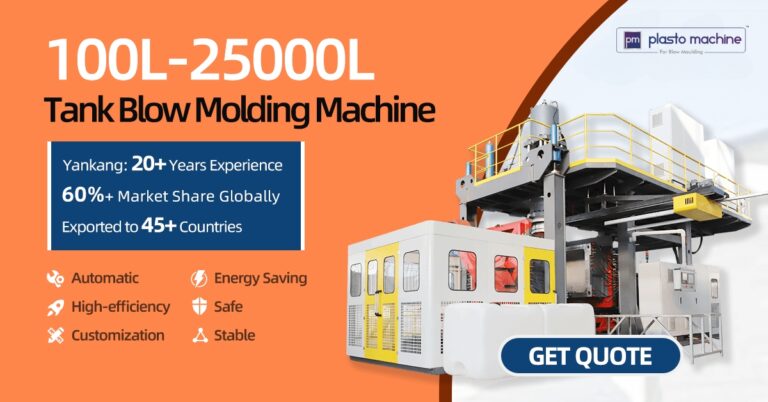Blow Molding Machine Innovations:
Advancements in Technology
Blow molding machines have evolved significantly, incorporating cutting-edge advancements in extrusion systems, automation, material technology, and energy efficiency. These innovations aim to enhance productivity, improve product quality, and promote sustainable manufacturing practices. Here’s a detailed look at the key advancements in blow molding machine technology:

1. Extrusion Systems for Blow Molding Machines
Extrusion technology plays a pivotal role in the performance of blow molding machines. Recent developments have optimized material usage and expanded design capabilities.
a. Accumulator Heads
Accumulator heads enable the storage of molten plastic, ensuring efficient material distribution. This advancement supports the creation of larger containers with complex shapes and consistent wall thickness, catering to diverse industrial requirements.
b. Co-Extrusion Technology
Co-extrusion allows for the layering of different plastics during the extrusion process. This innovation enhances barrier properties, improves strength, and boosts the visual appeal of blow-molded products, particularly for packaging solutions requiring durability and extended shelf life.
2. Automation and Control Systems
Modern blow molding machines leverage automation and advanced control technologies to enhance precision and operational efficiency.
a. Programmable Logic Controllers (PLCs)
PLCs deliver precise control over machine parameters such as temperature, pressure, and speed, ensuring consistent product quality and minimizing errors.
b. Human-Machine Interface (HMI)
HMIs offer a user-friendly interface for real-time monitoring and control. Features like touchscreen displays and remote accessibility empower operators to optimize production effortlessly.
3. Material and Mold Innovations
Material and mold technology advancements have revolutionized product design and production efficiency in blow molding.
a. Lightweighting Techniques
Lightweighting optimizes material usage without compromising structural integrity, reducing production costs and supporting eco-friendly manufacturing.
b. Rapid Tooling and 3D Printing
Rapid tooling and 3D printing have transformed mold production, enabling faster prototyping and customized solutions for low-volume runs. This flexibility accelerates time-to-market and supports innovative designs.
4. Energy Efficiency in Blow Molding Machines
The industry’s focus on sustainability has driven the adoption of energy-efficient technologies.
a. Electric Drives
Replacing traditional hydraulic drives with electric drives reduces energy consumption and maintenance needs while improving precision control.
b. Energy Recovery Systems
Energy recovery systems capture and recycle excess energy generated during machine operation, enhancing efficiency and reducing the environmental footprint.
The Future of Blow Molding Machines
With continuous advancements in extrusion systems, automation, materials, and energy efficiency, blow molding machines are better equipped to meet the demands of modern manufacturing. These technologies enable the production of intricate designs, improve sustainability, and enhance cost-efficiency.
Manufacturers adopting these innovations are poised to achieve higher productivity and maintain a competitive edge in the evolving market. The future of blow molding machines promises even more groundbreaking developments, driving progress across industries.
By incorporating these advancements, businesses can leverage the full potential of blow molding machines to achieve superior results.
- Share
Our Products
- Single station blow moulding machine
- Double Station Blow Moulding Machine
- Auto Deflashing Blow Moulding Machine
- Continuous Parison Blow Moulding Machine
- Accumulator Parison Blow Moulding Machine
- Custom Made Blow Moulding Machine
- Toy Making Blow Moulding Machine
- 15 ltr to 60 ltr Blow Moulding Machine
Get in touch
- Plasto Avenue, Plot No - 41, Panchamrut -3 Industrial Park, Village-dhamatvan, Tal.Daskroi, Ahmedabad-382435, GJ(IN)
- +91 6355 731 284
- sales@plastomachine.com


